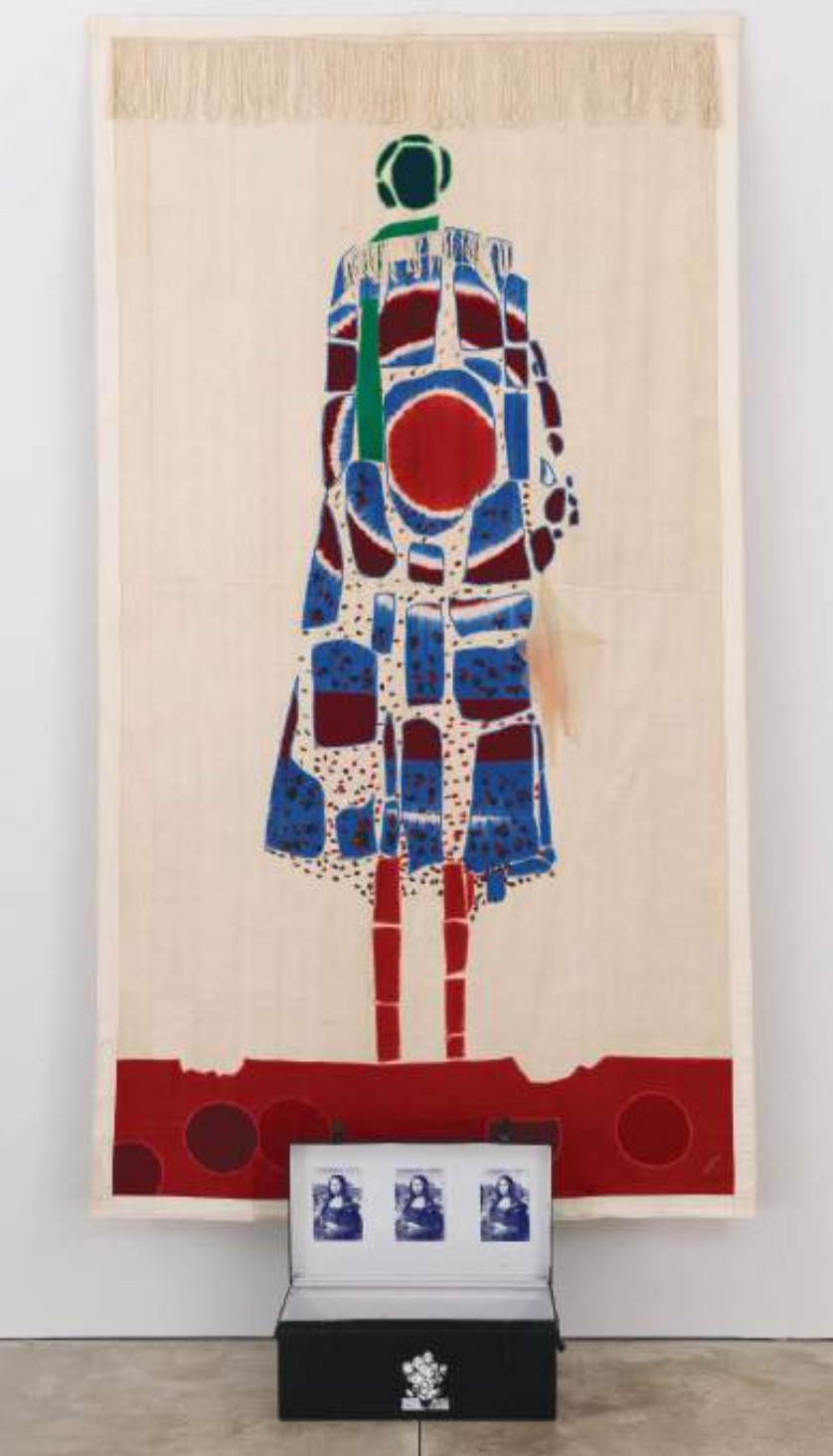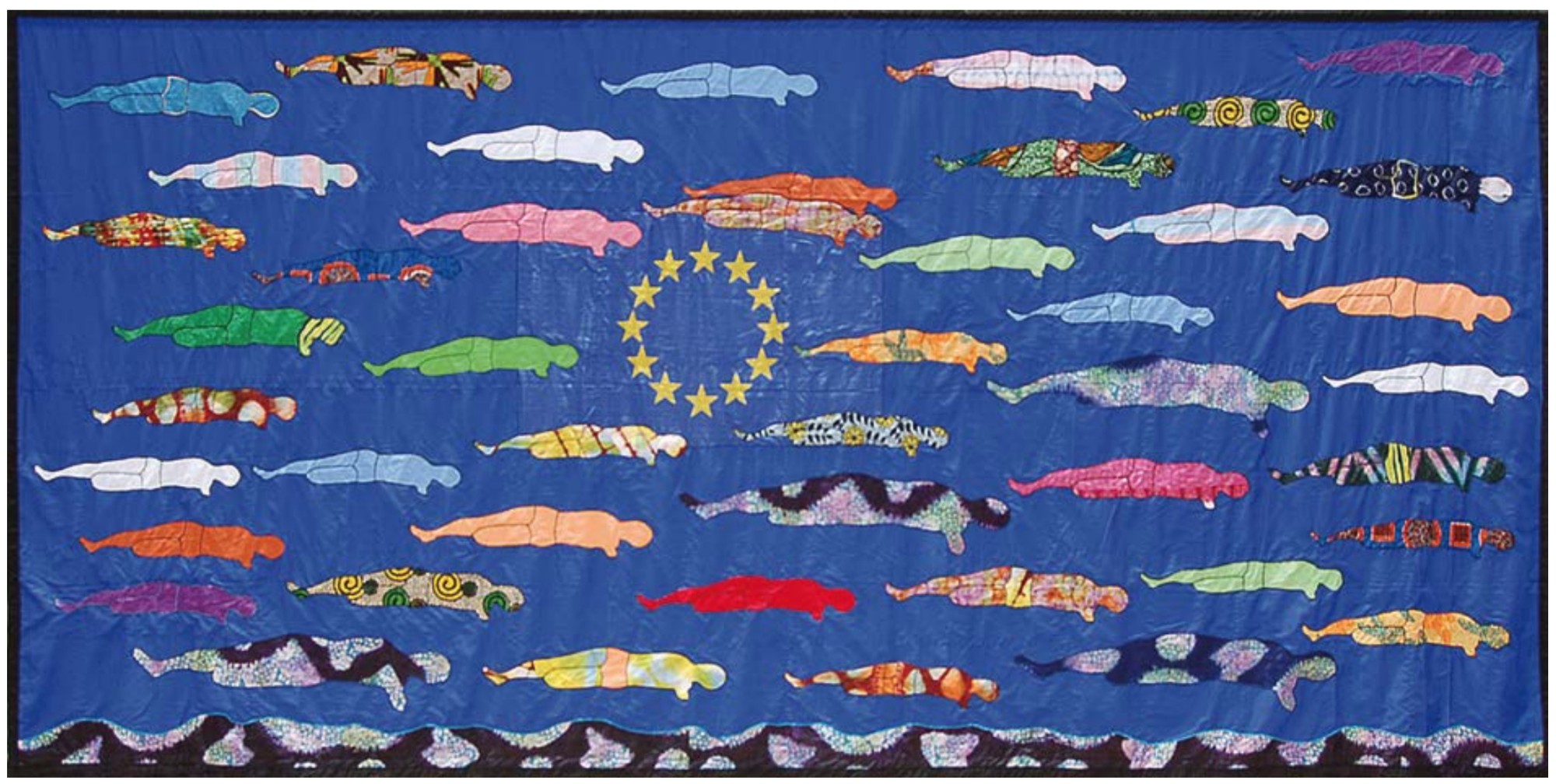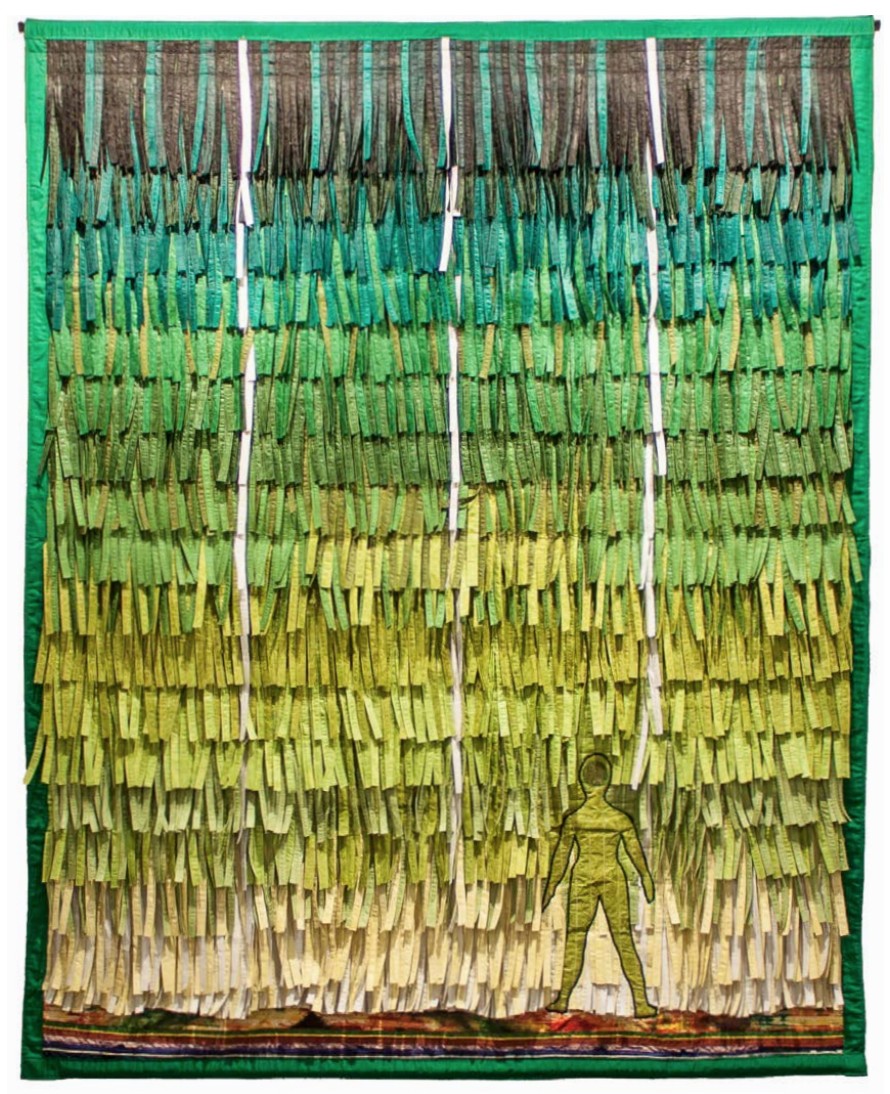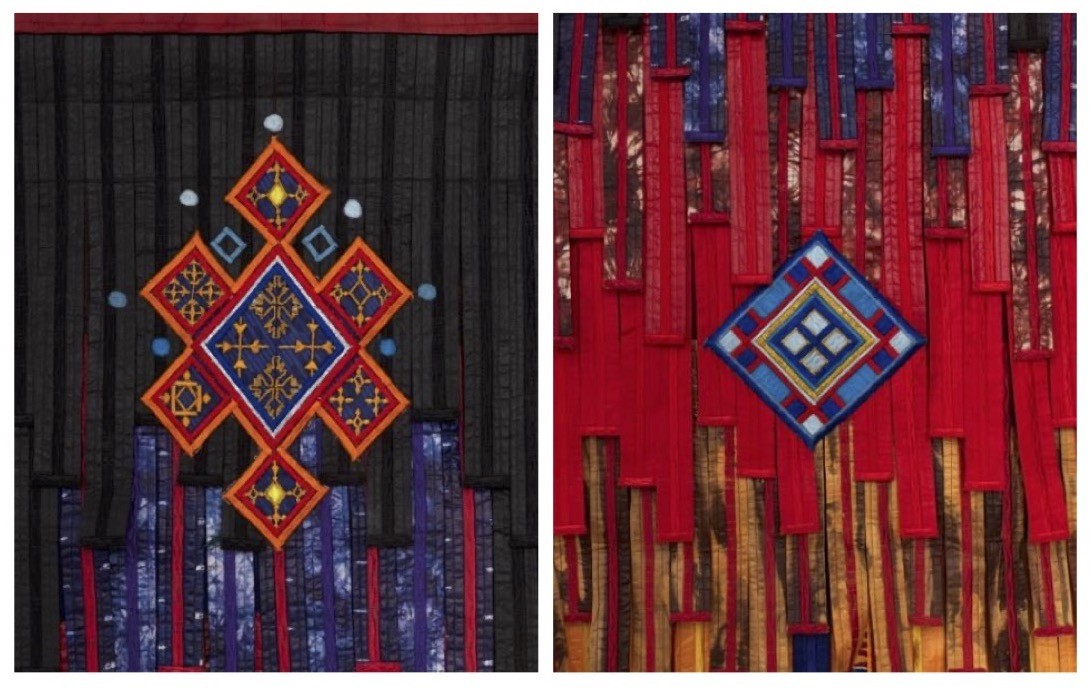Abdoulaye Konaté: Speaking Through Textiles
By Laura Heyrman
The Malian artist Abdoulaye Konaté (b. 1953) is an internationally honored and globally exhibited artist whose focus has been on working with fabrics for almost 30 years. Originally trained in painting at the Institut National des Arts of Mali, Konaté became interested in other media while studying at the Instituto Superior de Arte in Havana, Cuba. His early works on paper featured Malian cosmological symbols and he also created fabric installations related to Malian art, music, and hunter societies. These themes appear in his art throughout his career but in the 1990s, Konaté switched to using fabric as his primary mode of expression. The artist said
“The decision to focus on fabric comes from the desire to use materials produced in my own country, to work from elements that are closest to me. In Mali we produce a lot of cotton and therefore there is a wide availability of this material for artists. Not to mention that it is particularly suitable for the creation of large-scale works.”
And large scale they are. Works Konaté describes as “small” are usually more than five feet in at least one direction. Of the examples I have included in the slide show, the largest is “Biometric Generation” which is over 20 feet wide. Such large works surround the viewer with an environment of color and texture.
In opting for textiles, Konaté continues a West African tradition of using clothing for communication and commemoration. In Bamako (Mali’s capital), the artist and his assistants dye fabric using traditional methods; tie-dyed and metallic finished fabrics are Malian techniques. Since 2020 when he was producing an exhibition of his work for Accra in Ghana, Konaté has also incorporated the traditional Ghanaian kente cloth in some of his works. Once the fabrics are chosen, they are cut and sewn according to the artist’s designs. His most common technique involves sewing the fabrics into ribbons which are then layered and sewn together. The ribbons are like brushstrokes creating color patterns and rhythms that enliven the surface. Additional elements, including the artist’s signature, are embroidered onto the work. (A photo of the artist at work is included in the slide show.)
The fluttery ribbon-covered surfaces of Konaté’s works are inspired by West African ritual garments, including Senufo ceremonial cloaks and the Malian secret society of Kôrêdugaw, who perform a rite of wisdom in which initiates dress in ragged coats and provoke laughter through exaggerated foolish behaviors. Members of this group are also teachers of the young, passing on cultural traditions, symbolizing generosity, tolerance, and advocating for others. These are all concerns which Konaté addresses in his art.
Color is of great importance in Konaté’s works. Though the choice and arrangement of colors may sometimes be made for abstract design purposes, in many works color has symbolic meaning in addition to its aesthetic purpose. Perhaps the most common color in Konaté’s works is indigo blue, a color which is symbolic of Mali, the artist’s birthplace and still his home. Other possible symbolic meanings for his colors are red for violence, white for light and goodness, black for death, and yellow for the land.
“I can say that in my art there are two well-defined lines of thought. On the one hand, there is the purely aesthetic side, influenced by the nature and cultural traditions of Mali, my country, and that determines the colors and the materials of my work. On the other hand, there is a more spiritual side, which stems from the desire to investigate and describe through my work the human suffering, which reflects itself on the relations between states, politics, the environment, society and the family.”
“Lune Bleue” is a current exhibition of works by Abdoulaye Konaté at Lévy Gorvy Dayan gallery in New York City. The show closes on February 17, 2024. link: https://www.levygorvydayan.com/exhibitions/abdoulaye-konate-lune-bleue
Primo Marella Gallery, Milan, Italy, represents Abdoulaye Konaté and their website has many resources about the artist. link: https://www.primomarellagallery.com/en/artists/1/abdoulaye-konate/
Please share your comments and questions on Substack.
Longer captions may not be fully visible on smaller screens. We apologize for the inconvenience.
If the caption obscures part of the artwork, click on the image to turn off the caption.














